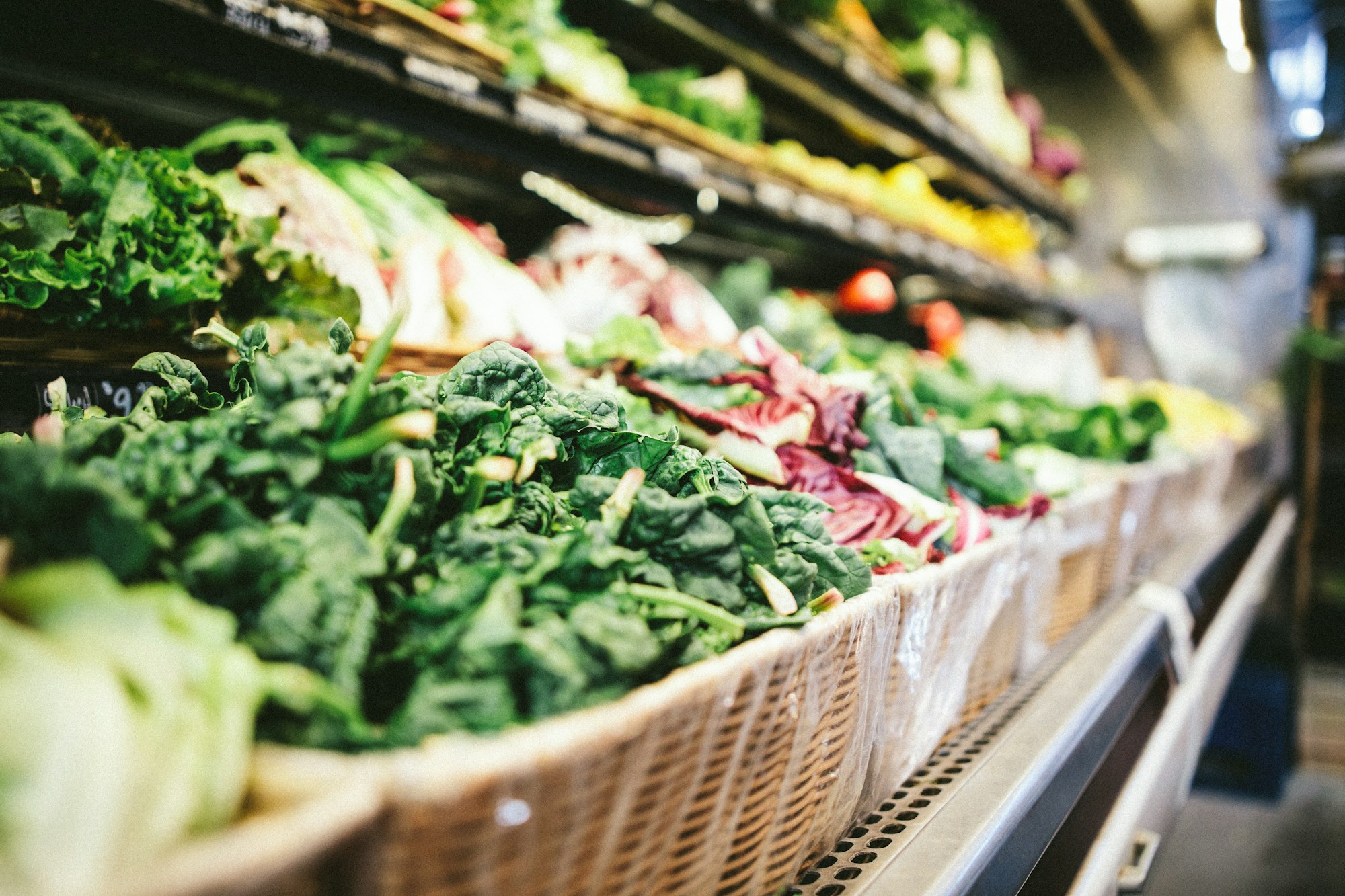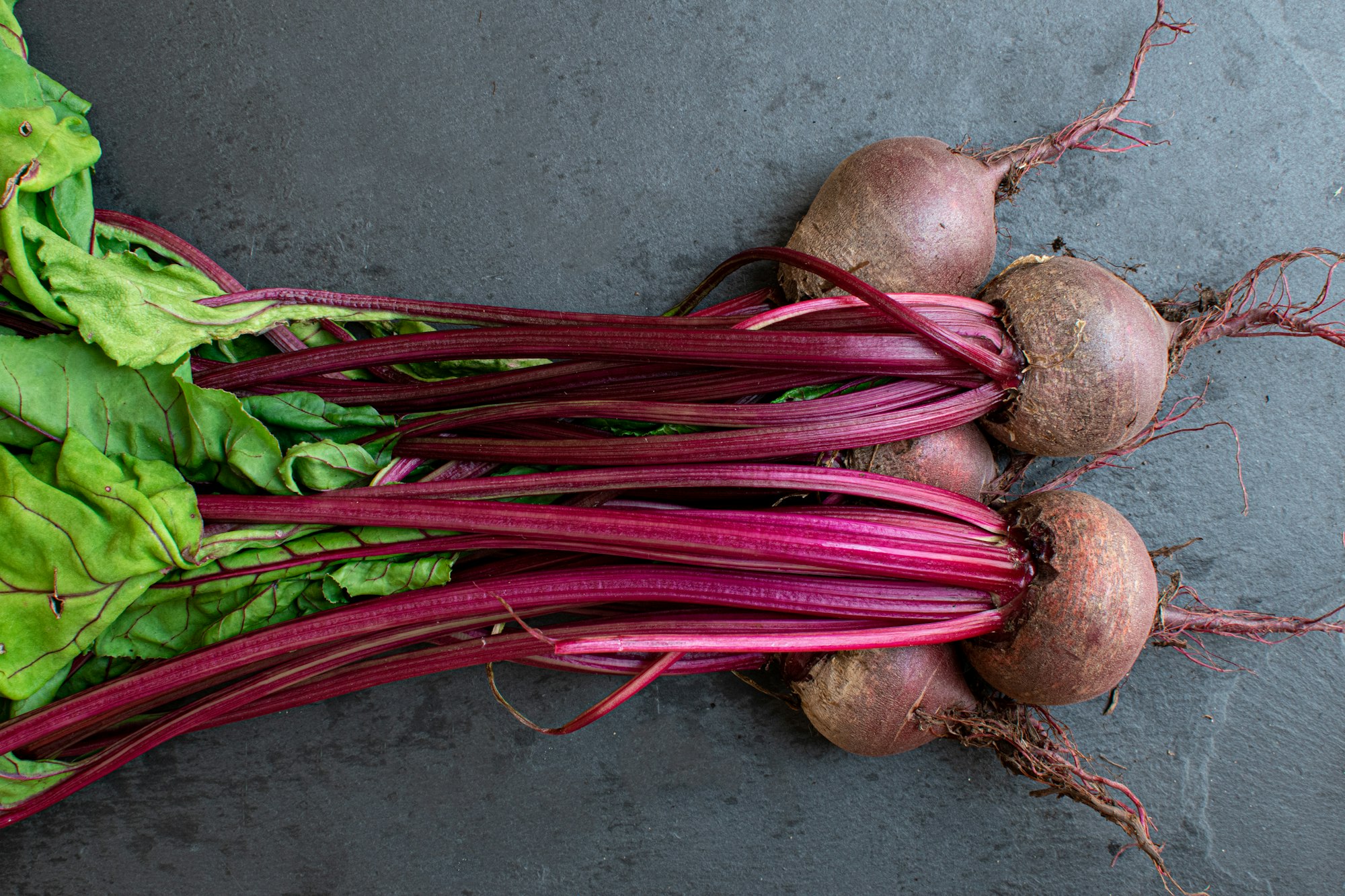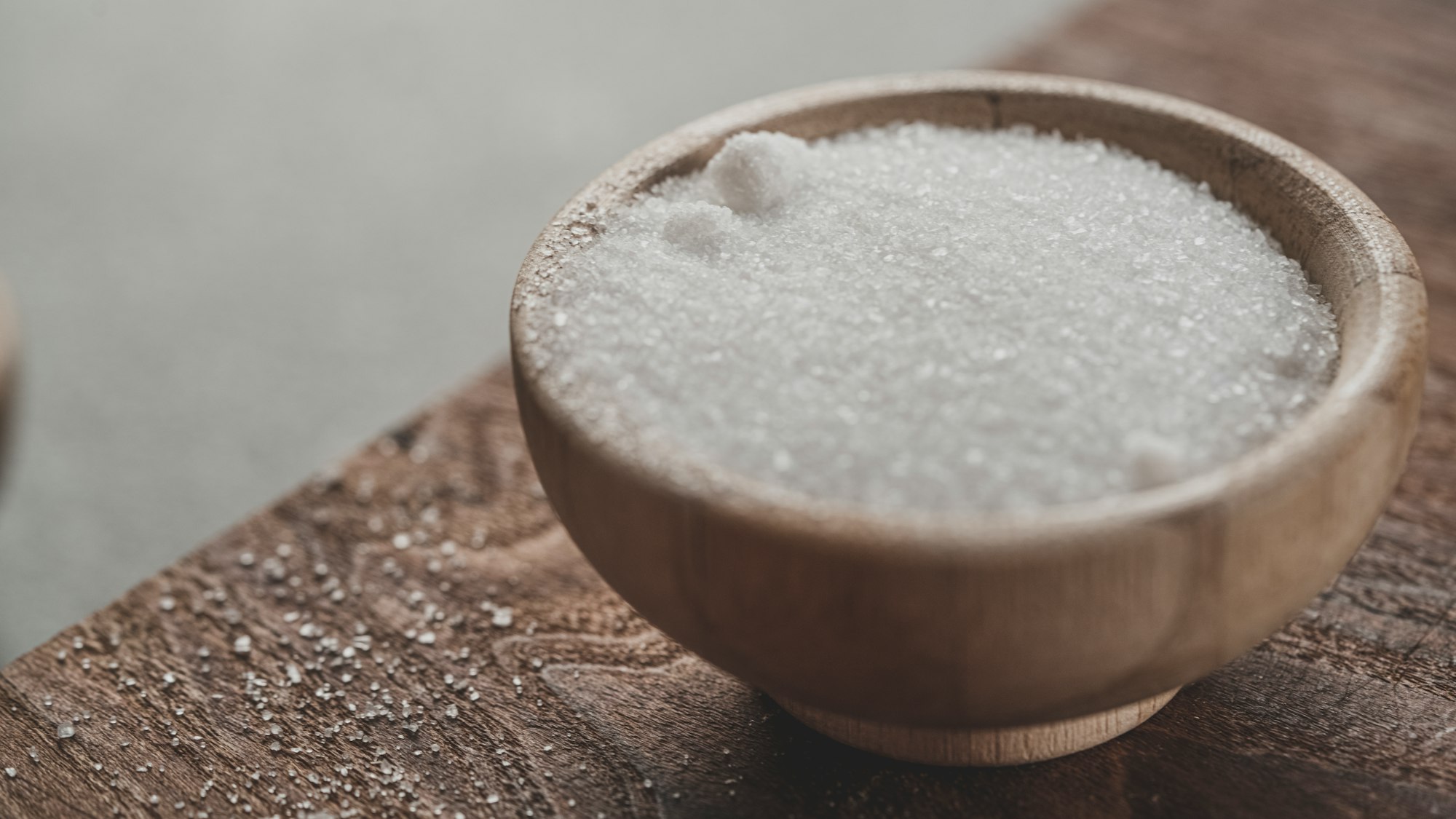Secret Foods to Boost Performance
Everyone wants the magic answer to see results overnight. What if I told you typical "superfoods" weren't the answer? We are going to talk about a few common and uncommon food items and the science behind their use in athletes.

Everyone wants to see results overnight and to find a magic solution: a simple pill to help shed body weight, an easy abdominal routine to find that six-pack, or a cheap supplement to expedite muscle growth. Whatever the solution, we all want that quick fix and short cut. I must inform you, there is nothing that can replace hard work and consistency. There is, however, some tools we can use along the way to help us on our journey.
This post will not cover the traditional fad "superfoods" like kale, chia seeds, etc. We are going to talk about a few common (and uncommon) food items plus the science behind their use in athletes. I will also share my personal experience with these foods from the past few years of endurance training. Fun fact: I used all five of the items below to supplement my marathon training!

Disclaimer: This post is not to be used as medical advice, but rather as a guide for learning, discussion, and personal insight.

Beets
Surprisingly, beet root juice has ample data in athletic performance. How beetroot juice works is by increasing the level of nitric oxide (NO) in the bloodstream. Nitrous oxide has numerous physiological functions including:
- Increasing blood flow
- Enhancing gas exchange
- Improving mitochondrial biogenesis and efficiency
- Strengthening muscle contraction

A 2017 systematic review looked at 23 articles published from 2010 to 2016 on the effects of beetroot juice on cardiorespiratory endurance in athletes.
- TLDR version: "results suggest that supplementation with beetroot juice can improve cardiorespiratory endurance in athletes by increasing efficiency, which improves performance at various distances, increase time to exhaustion at submaximal intensities, and may improve the cardiorespiratory performance eat anaerobic threshold intensities and maximum oxygen uptake (Vo2 max)"
In experienced athletes, the effect of supplementation with beetroot juice on time-to-exhaustion was tested at intensities of 60%, 70%, 80% and 100% peak power. Athletes were able to maintain an intensity of peak power significantly longer during exercise with supplementation (see graphic below), and there was a trend toward increased endurance at 100% peak power.

The study results might reflect a lower VO2 response at submaximal intensities, delaying the time when the athletes reached VO2 max and therefore became fatigued. This would allow a longer sustained effort.
Trained runners participating in a 5000-m test ran 5% faster in the last 1.1 miles with no significant overall improvement. The runners took the beetroot juice 90 minutes prior to exercise, and this may be why a lack of significance was found. In other studies, the beetroot juice was given almost 3 hours prior to exercise.
Regarding beetroot juice effects on mitochondrial respiration and oxidative phosphorylation, it was found that acute supplementation is insufficient to produce mitochondrial biogenesis.
The authors found that not all studies show a positive effect. With many supplements, efficacy can vary based on factors such as age, diet, physiological and training status, and other parameters such as the intensity, duration, endurance modality, and environment conditions. In addition, some studies show contradictory data. Specifically, the effects from beetroot juice may be undermined by interaction with caffeine and other supplements (Glaister, et al. 2015).
More Beet Data
There was a randomized, double-blind cross-over study published in 2018 that looked at the effects of beetroot juice on performance and fatigue in a 30 second all-out cycling sprint. Fifteen healthy, resistance-trained men ingested 70 mL of either beet juice or placebo. Three hours later, participants undertook the cycling test. Before and after the sprint exercise, three countermovement jumps (CMJ) were performed and blood lactate samples were obtained. Compared to placebo, beet juice consumption significantly improved peak and mean power output and also reduced the time to reach peak power output. No differences were detected in the fatigue index. Over time CMJ height diminished, power diminished, blood lactate levels increased, but no effect from supplementation was observed. The authors concluded that beet juice improved performance in a 30 second cycling sprint.
Another systematic review published in 2020 discussed the potential risks of chronic beetroot juice use. The increase in nitric oxide has the possibility to form N-nitroso compounds (NOCs). These compounds can pose health risks. "More research is needed to investigate the link between NOC formation and beetroot juice intake for shorter and longer periods of time, and its potential carcinogenic risk. In the meantime, it is important to be cautious with chronic use of beetroot juice to enhance sports performances."
Final Thought: If you have had beets before, you are aware they pretty much taste like dirt. However, if you blend them up with orange juice or something similar, they really aren't that bad! I have felt benefit (placebo or not) in my training, and I only use 1/4 cup of juice about two hours before my runs. Try it out!

Tart cherry juice
Yes, another juice! Unlike beet juice, tart cherry juice is more for enhancing recovery than boosting performance. We all know that a speedy recovery means more energy and muscle to keep progressing towards our goals!
Tart cherry juice is an antioxidant. The goal of antioxidants is to increase the body's defenses against oxidative stress. Antioxidants scavenge free radicals from cells and prevent or reduce the damage caused by oxidation. Vigorous exercise breaks down muscle tissue and creates oxidative stress in the body. Therefore, it is not too surprising that there are multiple studies looking at antioxidant supplementation in athletes.
Tart cherry juice has been shown to improve muscle function and reduce muscle damage, oxidative stress, oxidative inflammation, and muscle soreness in athletes. Let's look at some of the literature behind this statement.
A randomized controlled trial (RCT) published in 2009 evaluated tart cherry juice in aiding recovery and reducing muscle damage, inflammation, and oxidative stress in marathon runners. The 20 runners included in the study consumed 16 ounces of tart cherry juice blend or placebo 5 days before, the day of, and 48 hours post marathon.
The labs that the authors studied included:
- Creatinine kinase
- Lactate dehydrogenase
- Interleukin-6 (IL-6)
- C-reactive protein (CRP)
- Uric acid
Other outcomes of note: muscle soreness, maximum voluntary isometric contraction (MVIC), total antioxidant status (TAS), and oxidative stress.
The above labs and other outcomes were examined before and following the race.
The authors found that isometric strength recovered significantly faster (P=0.024) in the cherry juice group. No other damage indices were significantly different. Inflammation was reduced in the cherry juice group (IL-6, P<0.001; CRP, P<0.01; uric acid, P<0.05). TAS was ∼10% greater in the cherry juice than the placebo group for all post-supplementation measures (P<0.05).


According to this small study, cherry juice appears to provide a viable means to aid recovery following strenuous exercise by increasing total antioxidative capacity and reducing inflammation.
I would highly recommend looking at this free article and the graphs for the laboratory markers! We cannot share the graphs in this post due to copyright, but the article is available to the public for free (hence the graph recreations above for your viewing pleasure).
More Tart Cherry Data
Another RCT was published in 2016 studying the effects of tart cherry concentrate on recovery following prolonged, intermittent exercise in semi-professional male soccer players. Sixteen athletes were included. This study included multiple laboratory markers which I loved seeing! Specifically, measures of inflammation (IL-1-β, IL-6, IL-8, TNF-α, hsCRP), muscle damage (CK), and oxidative stress were analyzed at baseline and 1, 3, 5, 24, 48 and 72 h post-exercise. Performance indices (isometric contraction, agility, and counter movement jump) recovered faster and muscle soreness ratings were lower in the tart cherry group (p < 0.05). The acute inflammatory response (IL-6) was reduced in the tart cherry group. There were no effects for oxidative stress and CK.
Although this was a small sample size, the authors concluded that tart cherry concentrate is efficacious in accelerating recovery following prolonged, repeat sprint activity. They also suggest that other polyphenol-rich foods may be similarly effective accelerating recovery following various types of strenuous exercise.
Finally, a 2020 meta-analysis sought to evaluate the effect of tart cherry juice on endurance exercise performance. This meta-analysis included 10 different studies with a total patient population of 127 males and 20 females. All patients were healthy and ingested tart cherry concentrate or placebo before exercise.
The authors found that tart cherry concentrate in juice or powdered form, ingested for 7 days to 90 minutes before exercise performance testing, significantly improved endurance exercise performance. The full article is not available for public access, and this information is strictly from the abstract available online.
I would mix cherry juice and lemon juice together and drink this first thing in the morning during my marathon training. The goal was to flood my body with the antioxidant-rich juice, but it was also a tasty treat to send me off to work!

Electrolytes
This may seem self-explanatory, but electrolytes are greatly underutilized in active individuals. There are numerous studies and articles outlining the benefit and necessity of electrolyte for muscle function.
Electrolytes are essential to skeletal muscle contraction. Figure 1 below shows the movement and various ions in the skeletal muscle.

A paper from 1994 discusses the correlation between low electrolytes and increased muscle fatigue. For athletes, muscle cramping and weakness is something we want to avoid. A 2010 paper focuses on the concept of dehydration and impaired physical and mental performance. Dehydration may sound like a lack of water. However, dehydration is much more than a water deficiency! This is the key point I wanted to discuss with you today. You can drink ample water prior to a big race or workout and still experience cramps during the event. This is because your body has now been flushed of all the electrolytes due to the free water consumed the day(s) prior. The authors of this 2010 paper in the Scandinavian Journal of Medicine and Science in Sports go into detail about an individualized drinking strategy for pre-exercise hydration. Pre-exercise hydration status is assessed from urine frequency, volume, color, osmolality, sweat rate and sweat composition.
Question: How are you supposed to know all of this? Won't a 20-ounce Gatorade be enough?
Answer: Sort of. If you really want to dial in your pre-exercise hydration, you can undergo urinalyses, sweat composition testing, and monitor your weight before and after exercise. This will give you data on how much of each electrolyte you lose in your urine and sweat, and then how much fluid you lose relative to the decrease in body weight after exercise. Personally, I have not undergone this type of testing, and unless you are a professional, you probably do not need to.
A general rule of thumb:
- Drink 16 ounces of fluid during every hour you exercise (ex. a two hour bike ride = 32 ounces of fluid you should consume during the ride).
- Drink 16-24 ounces of water for every pound of body weight lost (when comparing pre and post exercise weight).
- Consume 16-24 ounces of electrolyte solution within 24 hours prior to exercise and then another 8-16 ounces of electrolyte solution the morning of exercise. This is in addition to the 64-128 ounces of water/fluids you drink during a regular 24 hour period of living.
- Monitor how you feel and consider tracking your fluid and electrolyte intake for a few weeks.

Salt
I know what you are thinking: "wait, salt IS an electrolyte." You are 100% correct. However, I think of salt and electrolytes as two separate "foods" in my training.
Think about the last time you had a hard workout or were left in a sweaty mess after being outside in the heat: what was left behind when your sweat dried up? Or, what did the sweat taste like when it dripped down your face into the corner of your mouth?
Salt was left on your skin. Sweat tastes like salt because it is salt!
Sweat contains a variety of electrolytes, and the primary two are sodium and chloride (aka SALT). Sodium loss is the most significant for athletes and active individuals. The data has shown a strong link between sodium loss and muscle cramps, and it is imperative that we stay on top of salt repletion, especially for achieving performance goals (Maughan, et al. 2010). If you are lacking sodium in your system, this will increase cardiovascular and thermal strain and decrease aerobic performance (Shirreffs, et al. 2011).
As mentioned in the electrolyte section above, dehydration is much more than a water deficiency. Both water and sodium need to be replaced to re-establish “normal” total body water, or "euhydration" (Shirreffs, et al. 2011). Daily water intake, per Shirreffs, is 4-10 L (quite a large range!) and sodium intake of 3500-7000 mg. Replacement of each can be accomplished by normal eating and drinking practices if there is no urgency for recovery. However, if rapid recovery (<24 h) is desired, aggressive fluid and electrolyte consumption should be encouraged to facilitate recovery for subsequent competition or activity.
Due to salt being the primary electrolyte lost in sweat, I think of salt separately from electrolytes. Yes, electrolyte solutions will provide you with sodium. For me and many other endurance athletes, our bodies require additional sodium on top of our normal electrolyte repletion efforts.
Some individuals practice "salt-loading" prior to hard workout sessions. The concept of salt-loading is to increase energy levels by expanding blood volume and improving blood flow. As you may have heard before, water follows salt, and if you consume a decent amount of salt (1000-15000 mg) before a workout, your body will absorb the salt into your blood stream creating a concentrated environment. To "un-concentrate" and regain isotonicity, water will move via osmosis from the extravascular space to the intravascular space. This will increase blood volume, flow, and oxygen delivery to your muscles!
I will caution any individuals with a cardiac history, high blood pressure, renal impairment, or other medical condition where you have been instructed by your medical provider to limit salt (or any electrolytes like potassium, calcium, etc.). PLEASE listen to your medical provider first. If you have questions or concerns, have a discussion with your provider at your next appointment. You can work together to create an individualized plan to keep you safe!

Caffeine
This one hardly needs explaining. We have touched on this specific "food" before in our previous post Which Supplement Should You Take to Stay Fit?
Caffeine is a stimulant. A stimulant increases heart rate, blood flow, cognitive performance, and oxygen delivery. As mentioned above with beets, more oxygen at the muscle tissues improves contraction under the aerobic ATP production and mitigates lactic acid build up (to some extent) due to prolonging the need for anaerobic energy cycles.
Caffeine can be found in coffee, tea, multiple types of energy drinks, energy bars, and pills. I would caution the use of energy drinks and bars as there are multiple extra ingredients and additives. In addition, too much caffeine can hinder your recovery by keeping your heart rate elevated. A little goes a long way, and it definitely helps give me the boost I need before a long run, outdoor ride, early morning swim, hard lift, or RACE!

